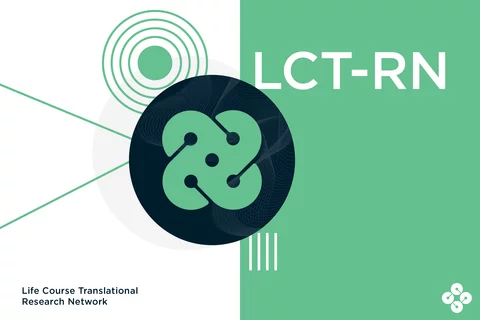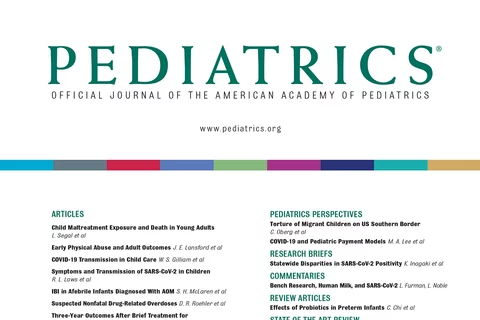Life Course Interventions
What makes an intervention a Life Course Intervention?
In 2022, the Life Course Intervention Research Network (now the Life Course Translational Research Network) identified 12 characteristics of life course interventions.
Video
Characteristics of a Life Course Intervention
Our paper, "What Makes an Intervention a Life Course Intervention?" in Pediatrics describes the 12 characteristics of life course interventions.
29 members of the LCIRN (now LCT-RN) provided input on this below list of characteristics of Life Course Interventions.
Learn more about the process in Pediatrics
1. Developmentally Focused
Life course interventions are inherently developmentally focused, but simply assigning an intervention to a specific life stage (eg, infancy, school age) is not enough. Tailoring the intervention to the child’s developmental stage (which may or may not correspond to biological age) and carefully considering the developmental processes under way during these life stages will more effectively move children toward health.
2. Strategically Timed
Interventions need to be strategically timed, focus on transitions and turning points in a developmentally appropriate way, intersect with culturally and biologically programmed events such as puberty to strengthen the child’s ability to navigate this phase, and overcome vulnerabilities, preferably in a way that leaves them more able to withstand future transitions.
3. Longitudinally Focused
Being longitudinally focused does not simply mean having a prolonged period of follow-up after an intervention, although this certainly helps with knowledge acquisition. Rather, short-term follow-up studies that reveal early changes in indicators of longer-term trajectories, or proximal transitional states that are precursors of later outcomes, can make important contributions, especially in studying conditions with poorly defined, multifactorial etiology (eg, childhood anxiety).
4. Multilevel or Holistic
Because most states of health result from complex processes occurring in multiple dimensions and at multiple levels and phases over time, simple interventions are likely to have limited success. Interventions need to address complexity but cannot themselves be so complex as to be impractical and unwieldy. The key is to identify those pivot points within complex systems where well-timed and focused interventions across individual, family, and community levels can have the greatest effect.
5. Strengths Based
Interventions also benefit from being strengths based so that even where there may be a marked problem in one area (eg, physical health), further strengthening mental or socioemotional health could bring lifelong health benefits. Researchers targeting interventions to deficits without building on strengths miss an opportunity to match the intervention to the child’s developmental profile.
6. Health Optimization Focused
Achieving optimal health and building health resilience and health reserves requires early life interventions, the absence of which almost certainly contributes to health disparities. Interventions designed to optimize all aspects of health development in the early years might appear to be a luxury, but if the processes that trigger pathways leading to early morbidity and mortality are laid in these years and become less mutable with time, then these types of intervention will have the greatest potential to improve life course health and save long-term costs.
7. Health Equity Focused
Researchers need to focus life course interventions on addressing health equity if they are to improve the health trajectories of whole populations. Assessing the effects of an intervention on the health of people who are disadvantaged because of one or more social determinants of health, designing interventions so that they are tailored to the most disadvantaged individuals, and partnering with communities throughout the research process to enhance engagement and understanding of community context can all help researchers to achieve equity goals.
8. Family Centered
By incorporating family-centered care principles into the intervention design process, researchers acknowledge that parents know their children best, potentially leading to a strengthening of the family support scaffolding surrounding the child with better intervention outcomes.
9. Antiracist
Interventions where researchers ignore the possibility of racism as a contributing factor to contemporary health issues and fail to tackle this important and often structural contributor to health trajectories will be less effective than those where researchers are aware of and respond practically to racism at all levels. This design will involve implicit shared language of antiracism in institutions and the research team, leadership buy-in, ongoing researcher and staff training, and long-term meaningful partnerships with communities of color.
10. Horizontally, Vertically, and Longitudinally Integrated
Similarly, researchers who integrate health interventions with existing programs and policies create possibilities for leveraging or potentiating impact. Interventions need to be horizontally integrated across sectors, vertically integrated across levels, and longitudinally integrated over time, with repeated interventions at different ages and/or across generations.
11. Collaboratively Co-designed
Co-design is defined as collective creativity across the design process, potentially resulting in interventions that are more engaging, satisfying, and useful. Moving beyond user consultation and engagement, youth, family, and community representatives work as equal partners with trans-disciplinary teams to jointly explore and find solutions to issues through fashioning interventions.
Learn more about Collective Sensemaking
12. Addresses Emerging Health Development Capabilities
Individuals are not simply passive recipients of the forces they encounter; rather, their characteristics or capabilities take shape over time and determine health trajectories. Communities also are not static, and their development can be observed and mapped and be the target of an intervention.
Learn more about Life Course Health Development
Life Course Interventions in Action

Life Course Translational Research Network
About the LCT-RN
Resources
